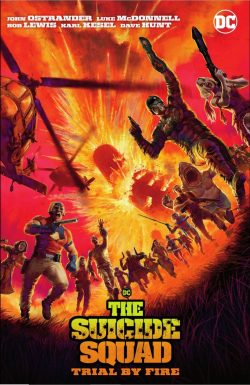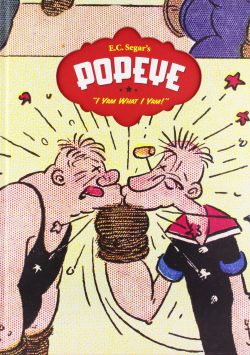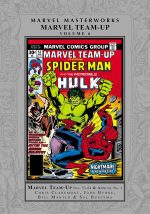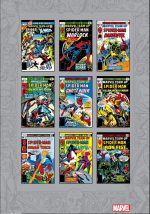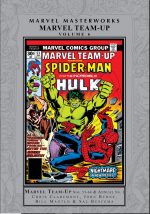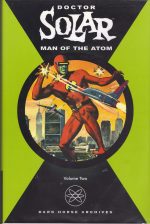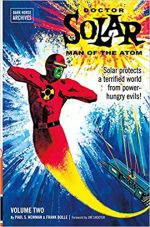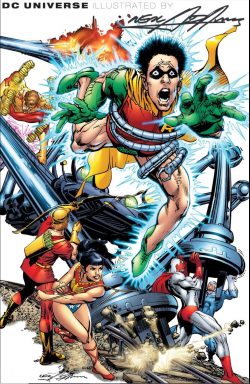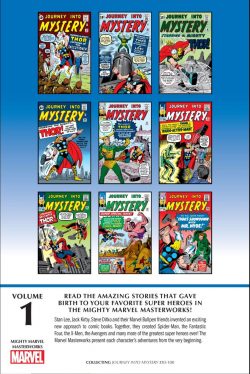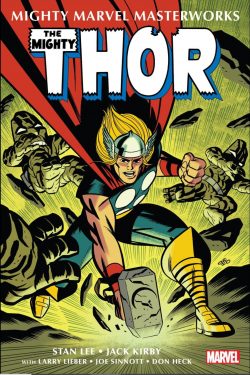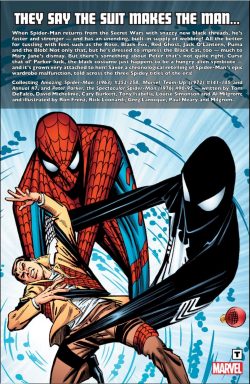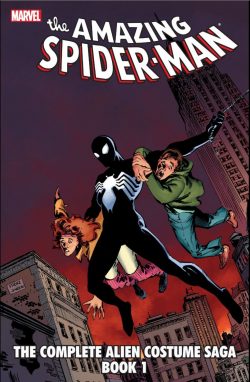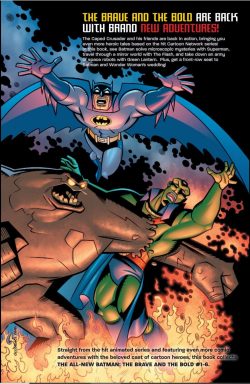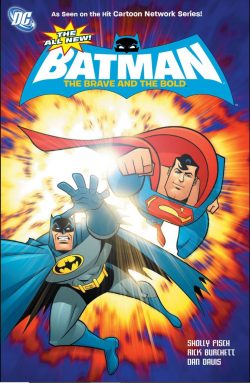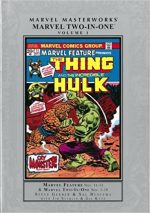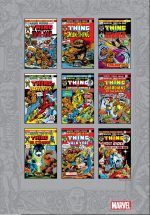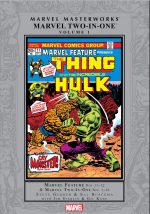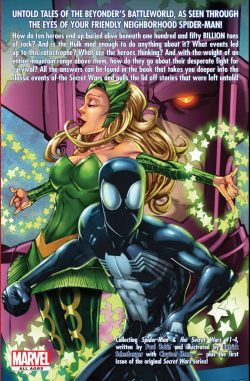
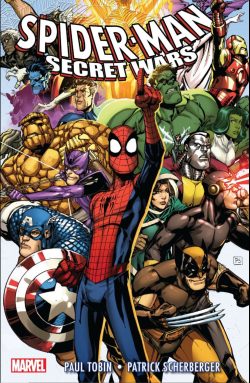
By Paul Tobin, Patrick Scherberger, Clayton Henry & Terry Pallot, with Jim Shooter, Mike Zeck, John Beatty &various (Marvel)
ISBN: 978-0-7851-4449-6 (digest TPB)
Presented in the manner of the company’s all-ages Marvel Adventures format, this inviting tale offers cosmic thrills, chills and light drama by in-filling on one the House of Ideas’ biggest successes. Assiduously revisiting the epic “maxi-seriesâ€, writer Paul Tobin, penciller Patrick Scherberger and inkers Clayton Henry & Terry Pallot cannily crafted an engagingly expanded selection of Spider-sagas faithful to the original whilst adding contemporary complexity and depth to the iconic wall-crawler.
This delightful digest-sized paperback (and eBook) collection collects a 4-issue miniseries from February-May 2010, and also re-presents the original Secret Wars #1 (May 1984): specifically its opening chapter by James Shooter, Mike Zeck & John Beatty.
The premise of the original 1980s blockbuster was that an all-powerful alien calling itself The Beyonder briefly abducted an army of Earth heroes and villains to a purpose-built alien Battleworld created as an arena in which to prove which was mightier – Good or Evil.
Whilst by no means a new plot, it gave the entire company a massive commercial boost and allowed a number of major series to radically retool at a time when comic book sales were in a dire downturn. This canny slice of infilling explores some of the saga’s untold moments in an engaging and appealing way, adding contemporary sensibilities and a lighter take to a classic but straightforward Fights ‘n’ Tights yarn.
I would strongly suggest, however, that if you’ve never seen the original epic, you track it down before tackling Spider-Man: Secret Wars – it’s not actually necessary, but you will get the most out of the new material that way…
The drama opens at a most critical moment, seconds after the almighty Molecule Man has dropped an entire mountain on top of the embattled heroes. With the Incredible Hulk holding up millions of tons of rock, the entombed good guys perforce take a few moments to chill and reminisce.
Top of Spider-Man’s list is the many gaffes he’s made since arriving, particularly the way he’s treated Captain America and the monstrous Green Goliath currently holding all their lives in his big green hands…
Thanks to heroic teamwork, all the buried brigade eventually emerge safely, but the wall-crawler has learned a hard lesson in a most harrowing manner…
The second chapter also focuses strongly on damaging mis- and pre-conceptions as the residents of Denver, Colorado – simultaneously shanghaied by the Beyonder and dumped on his remodelled planet as some kind of control group – is assaulted by a horde of marauding aliens, and the heroes form a living barricade with the valiant but all-too-human civilian defenders to lives and property.
They are surprisingly assisted by arch-nemesis and ultimate evil Doctor Doom, but try as he might Spider-Man cannot fathom the Iron Dictator’s true purpose…
At one critical juncture, the world-devouring cosmic god Galactus decided to end the contest early by eating Battleworld, prompting a desperate alliance by the transplanted heroes and villains to stop him. Here, portions of their combined assault are examined in detail as Spider-Man experiences bizarre reality-warping episodes – a natural side effect of proximity to the perilous planetivore – and flashes back and forward through his personal past and futures, experiencing happiness and the darkest of imagined terrors…
The original miniseries culminated with Doom stealing the Beyonder’s power to become omnipotent. In this modern re-visitation, that conditional triumph is examined as the web-spinner is granted a taste of paradise by the troubled new god who is finding it hard to hang on to lust for conquest – or even personal ambition – after achieving all-consuming divinity…
The cleverly introspective human adventure is capped off by a re-presentation of the original saga’s first issue from 1984, wherein ‘The War Begins’ with the Avengers, X-Men and Fantastic Four; Magneto, the Hulk and an utterly out-of-his-depth Spider-Man all teleported into the deep unknown to see a galaxy destroyed and a world constructed purely so that a cosmic force can determine which of two philosophies is correct.
Arrayed against them were Doom, Galactus, Molecule Man, Ultron, the Lizard, Dr. Octopus, the Enchantress, Absorbing Man, Kang the Conqueror and the Wrecking Crew: all of whom have no problem with a disembodied voice telling them “Slay your enemies and all you desire shall be yoursâ€â€¦
Unceremoniously dumped on the brand new world, the sides split into factions and the War begins…
This blockbusting little box of delights also includes a full cover gallery by Scherberger, Christina Strain, Chris Sotomayor, Veronica Gandini, Jean-Francis Beaulieu, Zeck & Beatty as well as pages of Scherberger’s early character sketches.
Fast-paced and impressive, bright and breezy with lots of light-hearted action and some solid sly laughs, this book really sees the alternative web-spinner hitting his wall-crawling stride with the violence toned down and “cartooned-up†whilst the stories take great pains to keep the growing youth-oriented soap opera sub-plots pot-boiling on but as clear as possible.
In 2012 the Marvel Adventures line was superseded by specific titles tied to Disney XD TV shows designated as “Marvel Universe cartoonsâ€, and these days there’s an entire TV and movie based Marvel Action line to play in, but these collected stories are still an intriguing and perhaps more culturally accessible means of introducing character and concepts to kids born often two generations or more away from those far-distant 1960s originating events. However even though these Spidey super stories are extremely enjoyable yarns, parents should note that some of the themes and certainly the violence might not be what everybody considers “All-Ages Super Hero Action†and might perhaps better suit older kids…
© 2018 MARVEL.


